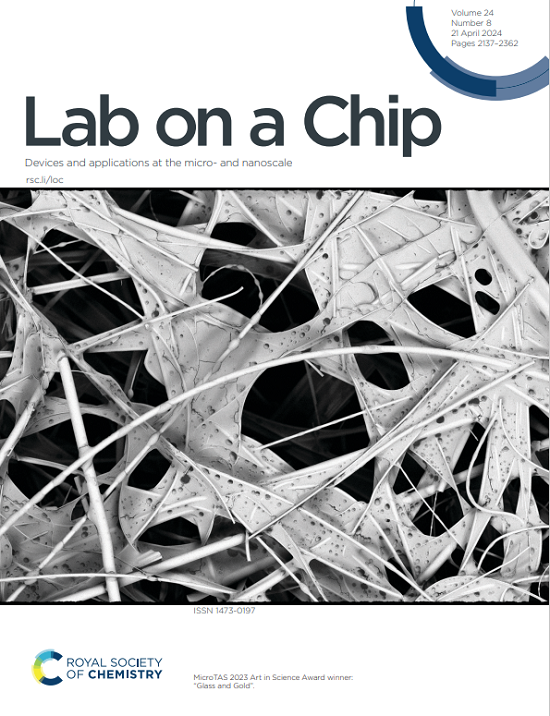Well-defined assembly of plasmonic metal nanoparticles by dielectrophoresis for highly sensitive SERS-active substrates.
IF 5.4
2区 工程技术
Q1 BIOCHEMICAL RESEARCH METHODS
引用次数: 0
Abstract
In this study, dielectrophoresis (DEP) was performed to develop highly sensitive surface- enhanced Raman scattering (SERS)-active substrates for molecular sensing. Substrates with a circular hole pattern were used, and plasmonic particles were trapped and immobilized along the edges of the pattern using dielectrophoretic forces. The arranged particles created hotspots, resulting in an enhanced SERS signal that was detectable even at concentrations as low as 10-10 M. This uniform arrangement provided a consistent signal over a large area. In addition, it was experimentally verified that the behavior of the particles varied with pattern diameter. This phenomenon was further supported by theoretical analysis. The proposed DEP-based SERS substrates are expected to be useful in various applications due to their excellent reproducibility and reliability.等离子体金属纳米颗粒在高敏感sers活性衬底上的良好定义组装。
在这项研究中,采用介质电泳(DEP)来开发高灵敏度的表面增强拉曼散射(SERS)活性底物用于分子传感。采用具有圆孔图案的衬底,利用介电泳力沿图案边缘捕获和固定等离子体粒子。排列的粒子产生热点,导致增强的SERS信号,即使浓度低至10-10 m也可以检测到。这种均匀的排列在很大范围内提供了一致的信号。此外,实验还证实了粒子的行为随图案直径的变化而变化。这一现象得到了理论分析的进一步支持。所提出的基于dep的SERS衬底由于其出色的再现性和可靠性,预计将在各种应用中有用。
本文章由计算机程序翻译,如有差异,请以英文原文为准。
求助全文
约1分钟内获得全文
求助全文
来源期刊

Lab on a Chip
工程技术-化学综合
CiteScore
11.10
自引率
8.20%
发文量
434
审稿时长
2.6 months
期刊介绍:
Lab on a Chip is the premiere journal that publishes cutting-edge research in the field of miniaturization. By their very nature, microfluidic/nanofluidic/miniaturized systems are at the intersection of disciplines, spanning fundamental research to high-end application, which is reflected by the broad readership of the journal. Lab on a Chip publishes two types of papers on original research: full-length research papers and communications. Papers should demonstrate innovations, which can come from technical advancements or applications addressing pressing needs in globally important areas. The journal also publishes Comments, Reviews, and Perspectives.
 求助内容:
求助内容: 应助结果提醒方式:
应助结果提醒方式:


